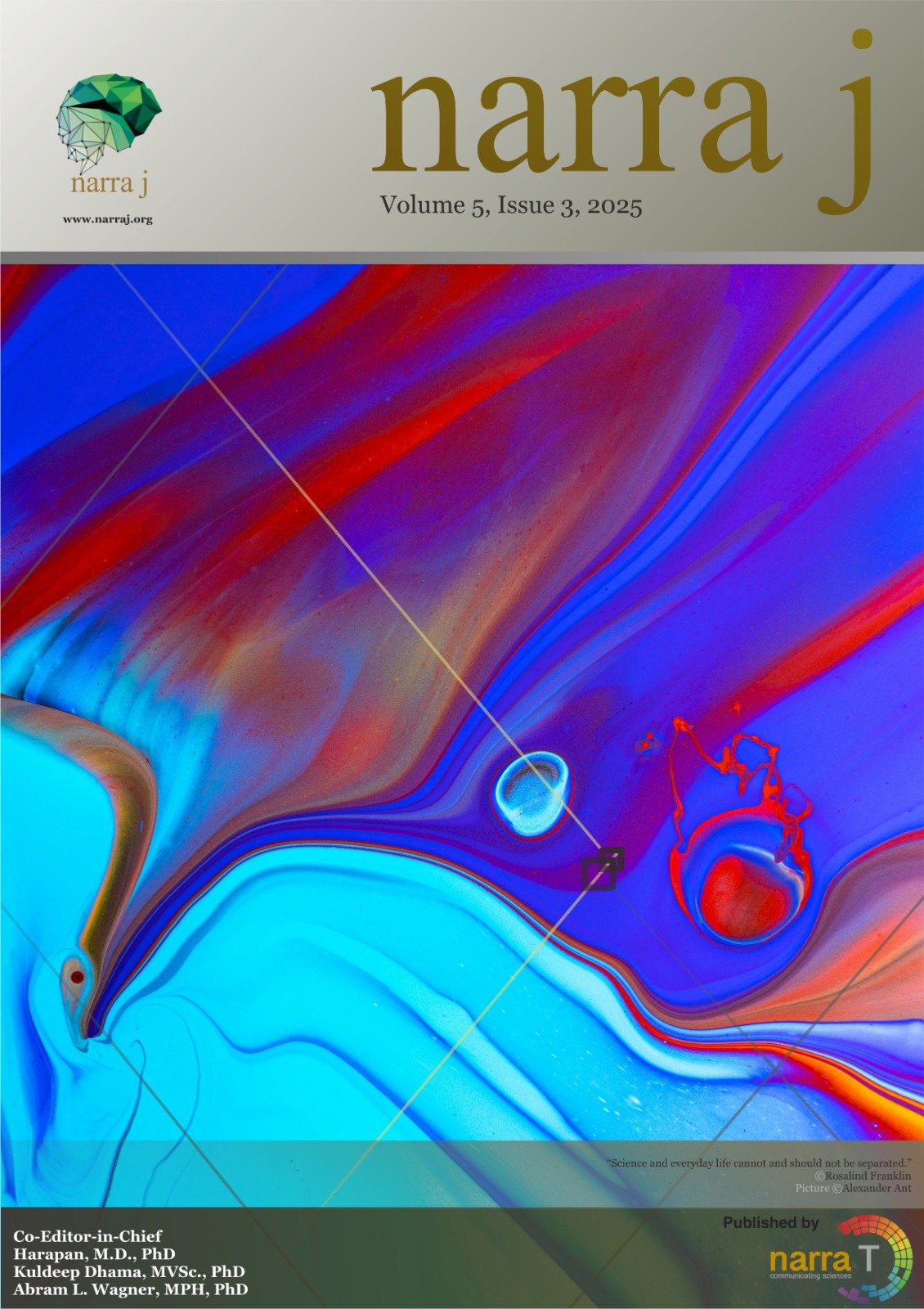Phytochemical profiling and enzyme inhibitory activity of Sterculia populifolia DC stem bark extract and fractions against elastase and tyrosinase
DOI:
https://doi.org/10.52225/narra.v5i3.1778Keywords:
Sterculia populifolia DC, antiaging, anti-pigmentation, tyrosinase inhibitor, elastase inhibitorAbstract
The demand for natural ingredients in cosmetic and medical applications is steadily increasing, particularly for anti-aging and skin-lightening products. Sterculia populifolia DC, a member of the Sterculia genus, is known to contain diverse bioactive compounds such as flavonoids, phenolics, and terpenoids, which may offer pharmacological benefits. The aim of this study was to evaluate the anti-aging potential of S. populifolia stem bark extract and its solvent-partitioned fractions through enzyme inhibition assays coupled with phytochemical profiling. The stem bark was extracted using 96% ethanol via maceration, followed by sequential liquid-liquid partitioning with n-hexane, ethyl acetate, n-butanol, and water. Phytochemical constituents were characterized using liquid chromatography-tandem mass spectrometry (LC-MS/MS). The inhibitory activities of the extract and fractions against tyrosinase and elastase enzymes were evaluated using spectrophotometric assays, with kojic acid and quercetin as positive controls, respectively. IC₅₀ values were calculated to quantify enzyme inhibition potency. LC-MS/MS analysis revealed key bioactive compounds, including 4-[(E)-(3,5-diamino-1H-pyrazol-4-yl)diazenyl]phenol, isofraxidin, and (22E)-ergosta-4,6,8(14),22-tetraen-3-one. Among the tested samples, the ethanol extract exhibited the most potent activity, with an IC₅₀ of 93.35 µg/mL for elastase inhibition and 133.15 µg/mL for tyrosinase inhibition—classified as strong and moderate activity, respectively. Collectively, these findings demonstrate that S. populifolia stem bark extract possesses promising anti-aging and depigmenting properties, supporting its potential development as a natural bioactive ingredient in cosmetic and skincare formulations.
Downloads
Downloads
How to Cite
Issue
Section
Citations
License
Copyright (c) 2025 Nur Khairi, Nursamsiar Nursamsiar, Novi F. Utami, Marwati Marwati, Syamsu Nur, Maulita Indrisari, Sukriani Kursia

This work is licensed under a Creative Commons Attribution-NonCommercial 4.0 International License.



